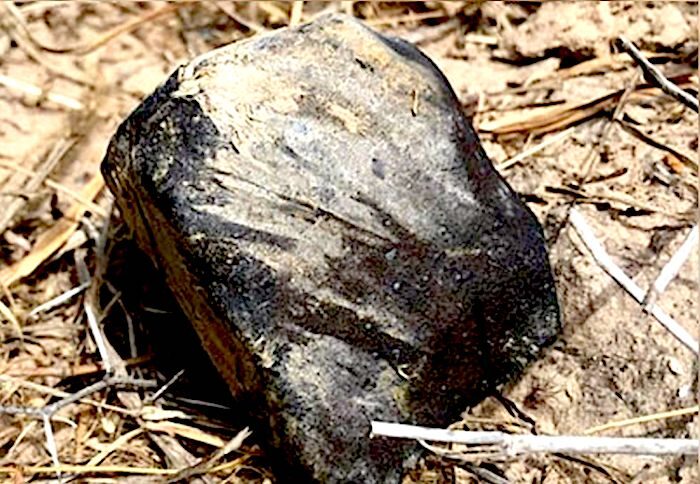A hefty meteor weighing around the same as a grand piano recently exploded in the skies above Texas, potentially showering the surrounding area with smaller fragments. One of these meteorite chunks has already been recovered and could help reveal more about our cosmic neighborhood, experts say.
The meteor, which was likely a small asteroid, entered Earth's atmosphere on Feb. 15 at around 5 p.m. CST and broke apart in a burst of flames about 21 miles (33.8 kilometers) above the city of McAllen. This type of space rock is known as a fireball meteor because of the bright flash given off as it breaks apart, due to friction between the fast-moving object and the air in the atmosphere.
"Based on analysis of preliminary information from several sources, NASA experts believe the object was a meteoroid about two feet [0.6 meters] in diameter weighing about 1,000 pounds [454 kilograms]," representatives from NASA's Meteor Watch wrote on Facebook. The meteor was traveling at around 27,000 mph (43,450 km/h) when it exploded and released the equivalent energy of around 8 tons (7.3 metric tons) of TNT, they added.
The meteor's size and speed suggested that fragments had likely reached the ground without burning up completely, NASA representatives wrote.
On Feb. 18, Robert Ward a meteorite hunter based in Arizona, recovered a fragment of the meteorite near El Sauz, Texas, after tracing the debris' trajectory using data from a National Oceanic and Atmospheric Administration weather radar, according to the American Meteor Society (AMS).
"When samples such as the remnants of this event are collected and studied, they enhance our understanding of the origin and evolution of our solar system," NASA representatives wrote.
There are likely more fragments scattered in the same area as Ward's fragment. If someone finds one on land they own then that person owns the fragment, but if you find it on public land you should contact the Smithsonian Institute, which manages the National Meteorite Collection, NASA representatives wrote.
In a weird coincidence, the recent fireball arrived exactly 10 years after the Chelyabinsk meteor, which was around nine times larger than the Texas fireball and exploded over Russia Feb. 15, 2013, with the equivalent force of around 30 Hiroshima bombs, Mike Hankey, operations manager at AMS, told Live Science in an email.
The recent fireball was also the third fireball meteor detected worldwide in as many days: On Feb. 13 a meteor exploded in the skies above France, and on Feb. 14 a space rock broke apart above Italy, according to AMS. What's more, all three produced meteorites have been recovered by experts, which is very rare, Hankey added.
About the Author:
Harry Baker is a U.K.-based staff writer at Live Science. He studied Marine Biology at the University of Exeter (Penryn campus) and after graduating started his own blog site "Marine Madness," which he continues to run with other ocean enthusiasts. He is also interested in evolution, climate change, robots, space exploration, environmental conservation and anything that's been fossilized.




Comment: See also:
Texas: Meteor fireball tracked on anniversary of Chelyabinsk incident - UPDATE: NASA confirms detection of asteroid